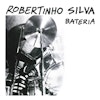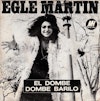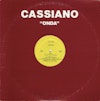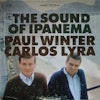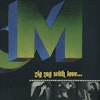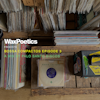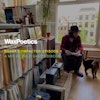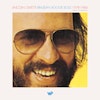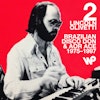The ten São Paulo musicians in the Afro-Brazilian super group Bixiga 70 often feel like they’re riding a hurricane. Most recently, their brand of big-band, percussive, Brazilian roots music stormed New York City in the middle of a snowstorm, as they played five shows in ten days. “The objective was really to put a foot in the U.S. via [our show at] Globalfest,” baritone saxophonist Cuca Ferreira says, “and now we have a tour in development for June [2015] in which we’ll have the chance to go to San Francisco and some other cities.”
“We’re very mystical in the band. Not everyone, but most of us,” guitarist/keyboardist Mauricio Fleury explains. “The first time we made our arrangement for ‘Deixa Gira Girá,’ we were kinda saved from a storm that nearly flooded our studio,” he says of their sophomore album’s lead track, an Afro-Brazilian religious chant in homage to the goddess of the storm, Iansã. With all ten members in the studio at the time the flood struck their neighborhood of Bixiga, they were able to swift their gear to higher ground in time to avoid catastrophic water damage. Iansã is often depicted as a woman riding a storm. “We try to play as if we’re freeing up ourselves from everything we’ve learned,” Mauricio explains.
Another secret ingredient in Bixiga 70’s supernatural sound is their studio, Traquitana Studios, located at 70 Rua 13 de Maio in the São Paulo neighborhood of Bixiga. “It’s a very important thing for us,” Mauricio says. “Bixiga is the neighborhood where our studio is, so we feel that sometimes we’re tapping into the energy from the bowels of this studio that’s very historical.” The neighborhood is home to São Paulo’s best-known samba school, Vai Vai, and is the go-to place for musicians playing all kinds of traditional Brazilian musical styles. In the ’60s and ’70s, the very location of their studio was a famous bar and live-music venue called Teleco-teco da Paróquia, popular among musicians and where touring international artists like Sarah Vaughan and Stevie Wonder were said to jam after their official gigs. “There’s a lot of history in this place, and we’re trying to recover as much as we can.”
Inevitably, when discussing Bixiga 70’s influences, Fela Kuti and Afrobeat come up. The band members readily accept the similarities and acknowledge their love for that genre, but listening to the lead single of their third (and also self-titled) album, “100% 13,” it’s clear the band’s evolved from their earliest recordings where Fela’s shadow loomed larger. Their second album and the new one spend more minutes exploring, reinterpreting, and rearranging the roots of Afro-Brazilian music. And the funny thing is, when you go back far enough, Afrobeat and Afro-Brazil share the very same roots. “We never really bought this thing of being ‘Afrobeat,’ ” Cuca says. Listening to the recording of one of their first rehearsals, Cuca recalls Mauricio saying, “ ‘Shit, we tried to play Afrobeat, but it came out Brazilian!’
“We cannot play like those guys, because it’s not our history,” Cuca concludes. “It’s gonna come out Brazilian anyway, because that’s everybody’s history in the band.”
